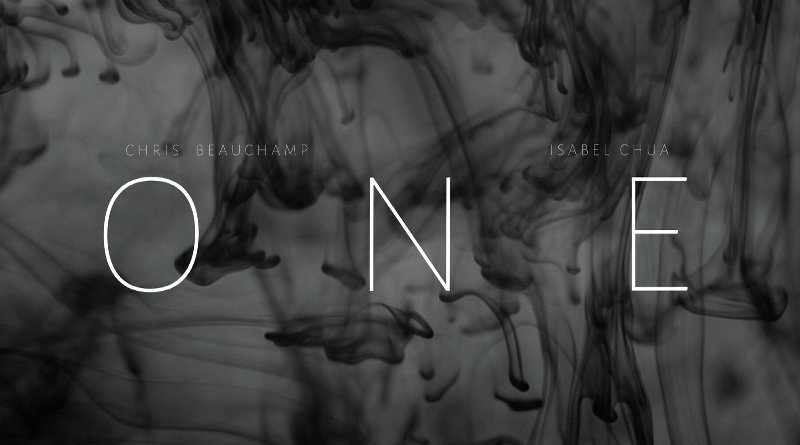One

CAT INDEX
CAT INDEX OVERVIEW
SCREENPLAY
MAKING
ACTING
Directed by Chris Beauchamp | Reviewed by Sayantan Mukherjee
“What would you do, if you woke up one day, the world had ended, and you somehow survived? You alone.”
Chris Beauchamp’s feature film “ONE” ponders this “what-if” question through its 57-minute runtime. This is truly an introspective film, almost meditative in its aspect.
This meditative nature is felt from the very beginning as we find ourselves staring at a completely blank screen. There is only an ambient audio which fades in after a while and you sit listening to it; the sound of a gentle breeze flowing through the forest. It plays for a minute on the dark screen and as you start to imagine yourself in a forest, there begins a slow music- making us ebb and flow with it. It is only after the 3-minute mark, when we see the first visual. The screen comes alive with the shot of a dirt road through the forest, shot in black and white. ONE is a monochrome movie, a colour choice that’s being used by modern filmmakers in many forms – either to portray a feeling or meaning or just as a stylistic choice.
We see a man (played by Chris Beauchamp himself) with a backpack; as he walks through the wilderness holding a gun in his hand . A text, “October” appears on the screen, notifying us of an abstract time when this is taking place. The camera is mostly static, and records the picturesque scenery with indulgence; even after the man has moved out of the frame. The beautiful long-shots are kept for lengthy durations and as the solitary man walks through these vast landscapes, the audience gets a scope of his loneliness.
 The man walks for a while and decides to rest on a rock- looking out into the horizon. We hear his monologue again as he speaks of the forest trails. He walks on these paths every day, hoping to find some answer but unfortunately, he hasn’t found anything yet. We understand that he is looking for survivors; others like him who could still be alive. He is longing for a solution - for some answer to his questions; but he has been unsuccessful thus far and he looks exhausted; not from the walk but from an intense and prolonged depression. This shot of him sitting on the rock is composed from a lower angle – looking up. We see electrical lines dividing the sky above the man’s head as he sits in deep introspection.
There is no rush in the form, there are no fast cuts used in editing and there’s not even a forward-moving narrative as such. This is an immersion into the unknown man’s life and his surroundings. We listen to the sound scape and internalize the beautiful visuals for an ample time without cutting away. The only thing stopping us from reveling in bliss would be the underlying dread and sadness. There is something woefully wrong here but we don’t know what it is. The “apocalypse” which supposedly wiped-out humanity leaving aside one man; could have actually happened. Or it could also be just a figment of the lonely man’s imagination.
He goes home and writes his experience in a diary – and the internal monologues we have heard thus far have all been recorded there. He stares at himself in the mirror for a long time, possibly jolted by his own disheveled appearance; his eyes full of anger and disgust. He is surrounded by candlelight. There is no electricity in his home, although we had seen electrical lines before when he was resting on a rock after his forest expedition. This could be a direct result of an actual extinction level event that might have transpired before, but we see no other proof of it.
The film continues its slow-pace as we almost embody the man’s thoughts- it feels like we’re sharing this time alongside him. The irony here being that we are not and he is quite terribly lonely.
The man walks for a while and decides to rest on a rock- looking out into the horizon. We hear his monologue again as he speaks of the forest trails. He walks on these paths every day, hoping to find some answer but unfortunately, he hasn’t found anything yet. We understand that he is looking for survivors; others like him who could still be alive. He is longing for a solution - for some answer to his questions; but he has been unsuccessful thus far and he looks exhausted; not from the walk but from an intense and prolonged depression. This shot of him sitting on the rock is composed from a lower angle – looking up. We see electrical lines dividing the sky above the man’s head as he sits in deep introspection.
There is no rush in the form, there are no fast cuts used in editing and there’s not even a forward-moving narrative as such. This is an immersion into the unknown man’s life and his surroundings. We listen to the sound scape and internalize the beautiful visuals for an ample time without cutting away. The only thing stopping us from reveling in bliss would be the underlying dread and sadness. There is something woefully wrong here but we don’t know what it is. The “apocalypse” which supposedly wiped-out humanity leaving aside one man; could have actually happened. Or it could also be just a figment of the lonely man’s imagination.
He goes home and writes his experience in a diary – and the internal monologues we have heard thus far have all been recorded there. He stares at himself in the mirror for a long time, possibly jolted by his own disheveled appearance; his eyes full of anger and disgust. He is surrounded by candlelight. There is no electricity in his home, although we had seen electrical lines before when he was resting on a rock after his forest expedition. This could be a direct result of an actual extinction level event that might have transpired before, but we see no other proof of it.
The film continues its slow-pace as we almost embody the man’s thoughts- it feels like we’re sharing this time alongside him. The irony here being that we are not and he is quite terribly lonely.
 The only exposition happens through the man’s memories where he remembers himself dancing with his beautiful wife (played by Isabel Chua). The lovely couple smile to each other as they dance in their home, with candlelight in the backdrop. Although, here the candles only serve as decoration rather than a light source. The man imagines his wife through the film in different times- once as he dines alone; remembering a dinner his wife cooked for him as they made plans for a trip. In both these nostalgic scenes, we see the camera is much livelier, as it moves with the dancing couple, or around the table as they blissfully make plans for a trip to Wyoming. In the outdoors, as he sits on a bench after his forest trip, he imagines her fingers interlocking with his own. Every moment of his earlier life was possibly spent with his wife and now the daily routines remind him of her at every step. He cannot overcome this immense gap left by her and wallows in helplessness.
We finally see an end to the man’s search for answers towards the conclusion in the month of “December” – two months after the first sequence of the film. He chooses to transcend the boundaries that were blocking his way to happiness – thus, finding a way out. Like with most of life’s problems, the solution is painfully simple once realized; but one may choose to ask whether simple solutions such as these are truly the answer.
Chris Beauchamp’s excellent portrayal helps us understand this man’s solitary struggle and makes us introspect on our own choices- especially reminding us to savor every pleasant moment in life as they happen.
The only exposition happens through the man’s memories where he remembers himself dancing with his beautiful wife (played by Isabel Chua). The lovely couple smile to each other as they dance in their home, with candlelight in the backdrop. Although, here the candles only serve as decoration rather than a light source. The man imagines his wife through the film in different times- once as he dines alone; remembering a dinner his wife cooked for him as they made plans for a trip. In both these nostalgic scenes, we see the camera is much livelier, as it moves with the dancing couple, or around the table as they blissfully make plans for a trip to Wyoming. In the outdoors, as he sits on a bench after his forest trip, he imagines her fingers interlocking with his own. Every moment of his earlier life was possibly spent with his wife and now the daily routines remind him of her at every step. He cannot overcome this immense gap left by her and wallows in helplessness.
We finally see an end to the man’s search for answers towards the conclusion in the month of “December” – two months after the first sequence of the film. He chooses to transcend the boundaries that were blocking his way to happiness – thus, finding a way out. Like with most of life’s problems, the solution is painfully simple once realized; but one may choose to ask whether simple solutions such as these are truly the answer.
Chris Beauchamp’s excellent portrayal helps us understand this man’s solitary struggle and makes us introspect on our own choices- especially reminding us to savor every pleasant moment in life as they happen.
 Sayantan Mukherjee is a teacher, writer and professional video editor based in Kolkata, India. He serves as the Chief-Editor of Cult Critic Film Magazine. He teaches at Lakshmipat Singhania Academy and as Visiting Faculty in Aliah University. He also works for EMMRC, St. Xavier’s College as anchor and editor of numerous MOOC programmes made for UGC, India.
Sayantan Mukherjee is a teacher, writer and professional video editor based in Kolkata, India. He serves as the Chief-Editor of Cult Critic Film Magazine. He teaches at Lakshmipat Singhania Academy and as Visiting Faculty in Aliah University. He also works for EMMRC, St. Xavier’s College as anchor and editor of numerous MOOC programmes made for UGC, India.


